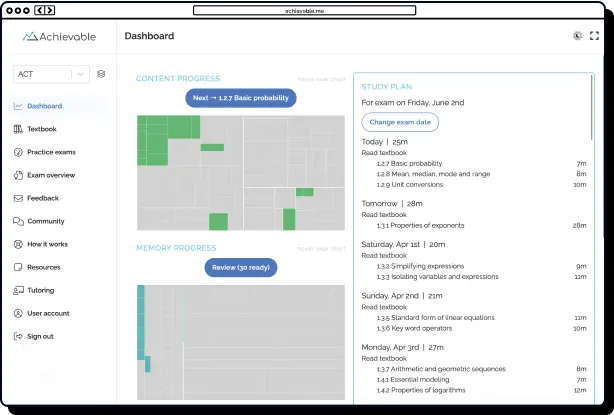
Turn your gap year into a medical school application advantage




Table of contents
- Understanding the pre-med gap year: Definition, trends, and common questions
- Why a pre-med gap year has become the norm - and what it means for you
- How common is a gap year for pre-meds?
- Why so many pre-meds take a gap year, and what you can gain
- Understand the real risks of taking a gap year before med school
- Is a gap year before med school right for you? What the data and experts say
- Debunking the biggest pre-med gap year myths
- Gap year vs. career break: What pre-meds need to know
This article is part 1 of 8 of our series on making the most of your medical school gap year, where we provide you with insights on studying for the MCAT, using your time effectively, and translating your experiences into compelling narratives. In part 1, we share the main reasons why so many students take gap years before applying to medical school, and why it's becoming more common to do so.
If you're considering a gap year before applying to medical school, or you're already in one, you're not alone. Nearly three-quarters of incoming medical students take at least one gap year, according to recent data from the Association of American Medical Colleges (AAMC). Instead of viewing this time as a delay, consider it an opportunity to strengthen your application and prepare for the challenges ahead. Medical school admissions committees seek candidates who utilize their gap year to acquire relevant skills, develop maturity, and demonstrate a clear commitment to a career in medicine. Simply working unrelated jobs or traveling aimlessly won't set you apart; instead, focus on developing your skills and expertise.
To help you make the most of your gap year, this guide outlines practical steps for pre-med students like you, including how to set a strategic application timeline, select experiences that enhance your credentials, and showcase your growth throughout the process. You'll find advice on avoiding common mistakes, securing strong letters of recommendation, and turning obstacles into examples of your adaptability and resilience. Whether you're mapping out your gap year or getting ready to showcase your experiences, this series is designed to help you leverage this valuable time and boost your chances of medical school acceptance.

Understanding the pre-med gap year: Definition, trends, and common questions
Why a pre-med gap year has become the norm - and what it means for you
If you're a pre-med student weighing your options, you've probably noticed that taking a gap year before medical school has become increasingly common. According to the AAMC's 2023 Matriculating Student Questionnaire, nearly 73.2% of incoming medical students now plan to take time off between undergrad and med school (AAMC 2023 Matriculating Student Questionnaire).
But this "gap year" isn't just a break. For most pre-meds, it's a strategic period, anywhere from several months to a few years, dedicated to building clinical skills, gaining research experience, or strengthening their application (Association of American Medical Colleges (AAMC)).
Why are so many pre-meds taking gap years?
- Not just for re-applicants: Gap years aren't just for those who didn't get in the first time. Many students now choose this path proactively to build their resume - through clinical jobs, research, extra classes, MCAT prep, or addressing personal and financial needs.
- Purposeful engagement: Rather than being seen as "time off," gap years are used to gain hands-on experience in research, clinical settings, post-bacc programs, or through leadership opportunities - all of which directly enhance your application (AAMC guidance on productive gap years).
- Changing demographics: Only 26.8% of new med students now enroll immediately after graduation, and the average age of matriculants is 24, reflecting a more varied journey to medicine (Shemmassian Consulting analysis).
As Duke University's Prehealth Advising Office points out, a gap year is really a time for growth and preparation, not simply a break (Duke University Prehealth Advising gap year perspective). Dr. Karen Schweitzer at Duke reports that over 75% of their pre-meds take at least one gap year.
For you as a pre-med, this means a gap year can be a smart, intentional investment in your readiness for medical school.
How common is a gap year for pre-meds?
If you're worried about being the odd one out by taking a gap year, don't be. Here's how the trend has changed:
- Mid-1990s: About 50% took a gap year
- 2017: 60%
- 2023: Over 73% - and at schools like Emory, it's closer to 90% (AMA on Emory gap year trends)
This shift means the average age of med school matriculants has climbed from 22 to 24. Dr. Joshua Wallenstein at Emory confirms that what once seemed unconventional is now the norm.
How long are these gap years?
- 1-2 years: 43.9%
- 3-4 years: 13.4%
- 5+ years: 7.9%
(Source: AMA analysis)
What's driving the increase? A highly competitive admissions process (national acceptance rate: 5.5%) - so students use the extra time to gain clinical hours, research, or academic upgrades (AAMC data).
Why so many pre-meds take a gap year, and what you can gain
Here's what's pushing the trend - and how it could benefit you:
1. Academic improvement: Time to boost your MCAT, finish prerequisites, or complete a post-bacc program - without juggling a full course load (The Princeton Review).
2. Financial preparation: Considering the average medical school debt is over $264,000, many use their gap year to save money or pay down loans (Brown University Health Careers Advising).
3. Personal wellness: Gap years are a chance to recharge, prevent burnout, and clarify your motivation for medicine (International Journal of Social Education).
4. Application strength: The extra time lets you add meaningful experiences, research, clinical work, and leadership that admissions committees value (AAMC Students & Residents).
For pre-meds, a gap year is now a core strategy for building a competitive application and preparing for the rigors of medical school.

Understand the real risks of taking a gap year before med school
While a gap year can open doors, it's important for pre-med students to weigh the downsides carefully.
Key disadvantages for aspiring med students:
- Longer road, added expenses: Postponing your medical education means you can save money in the short term, but it also leads to a later start in your career. With training already spanning many years, one gap year can mean a 3% reduction in lifetime income, especially in longer residencies (Med School Insiders' gap year advice for pre-meds). A year without a physician's salary, plus living and application costs, can add up.
- Losing academic momentum: Taking time off from structured study can make it harder to get back into the habits needed for medical school. You'll need to stay disciplined during your gap year (GoAbroad's analysis of gap year pros and cons).
- Purpose matters: Admissions committees, like those headed by Dr. Michael Chen, expect you to use your gap year intentionally. Unfocused or poorly explained gap years can raise red flags about your motivation.
- Access and equity: Not all students can afford unpaid research or exclusive gap year experiences. About half of gap year applicants do research, but these opportunities aren't available to everyone. For students from lower-income backgrounds, this can widen the experience gap.
Bottom line for pre-meds: A gap year can be a powerful tool for growth and preparation, but it comes with real trade-offs. Careful planning and purposeful activities are key to making it worthwhile.
Is a gap year before med school right for you? What the data and experts say
Medical schools mainly care about how you use your gap year, not if you took one. Activities like academics, clinical experience, and addressing burnout are all seen positively.
"Applicants who take gap years and use them purposefully to address weaknesses or gain experience are viewed favorably by admissions committees."
Research also shows that taking a gap year can reduce your risk of burnout in med school (Psi Chi study).
Ask yourself:
- Do you need to improve your GPA or MCAT?
- Would more clinical or research experience help?
- Are you feeling burned out?
- Do you want more time to clarify your goals?
A gap year is most valuable when it helps you grow or address weaknesses - not just when it's used as a pause (The Princeton Review).
For most pre-meds, treating your gap year as an intentional investment pays off.
Debunking the biggest pre-med gap year myths
Let's set the record straight for pre-meds:
Myth #1: "Medical schools look down on gap years." Committees actually value maturity and diverse experience.
Myth #2: "You'll be the oldest in your class." Most applicants take time off, so the average matriculant is now 24 (UMass Amherst gap year info).
Myth #3: "A gap year signals less commitment." Admissions prefer candidates who show they're prepared, not just those who rush in. Experiences like research or clinical work show true readiness (Syracuse University pre-health FAQ).
Myth #4: "Gap years are wasted time." Nearly half of med students use gap years for clinical hours, coursework, or MCAT prep (AMA analysis; UMass Amherst advice). Admissions committees care about how relevant and meaningful your activities are (AAMC recommendations).
Myth #5: "You must take a gap year to stand out." Gap years are not required. Well-prepared applicants are still accepted straight out of college (Student Doctor Network).
Bottom line for pre-meds: A gap year is a flexible tool - useful, but not mandatory.

Gap year vs. career break: What pre-meds need to know
For pre-meds, it's important to make the distinction:
- Pre-med gap year: A focused, 1-2 year period (sometimes longer) aimed at gaining experience or improving your application.
- Career break: A longer, less structured pause from your career - rare among pre-meds and not typically focused on medical school goals (Indeed; Rachel Off Duty).
Key takeaway for pre-meds: A gap year is a purposeful step toward medical school. Admissions committees understand and value this difference.
Click here for part 2, "Map your gap year timeline for application success." Read on for best practices on structuring your gap year and keeping up with key deadlines.

